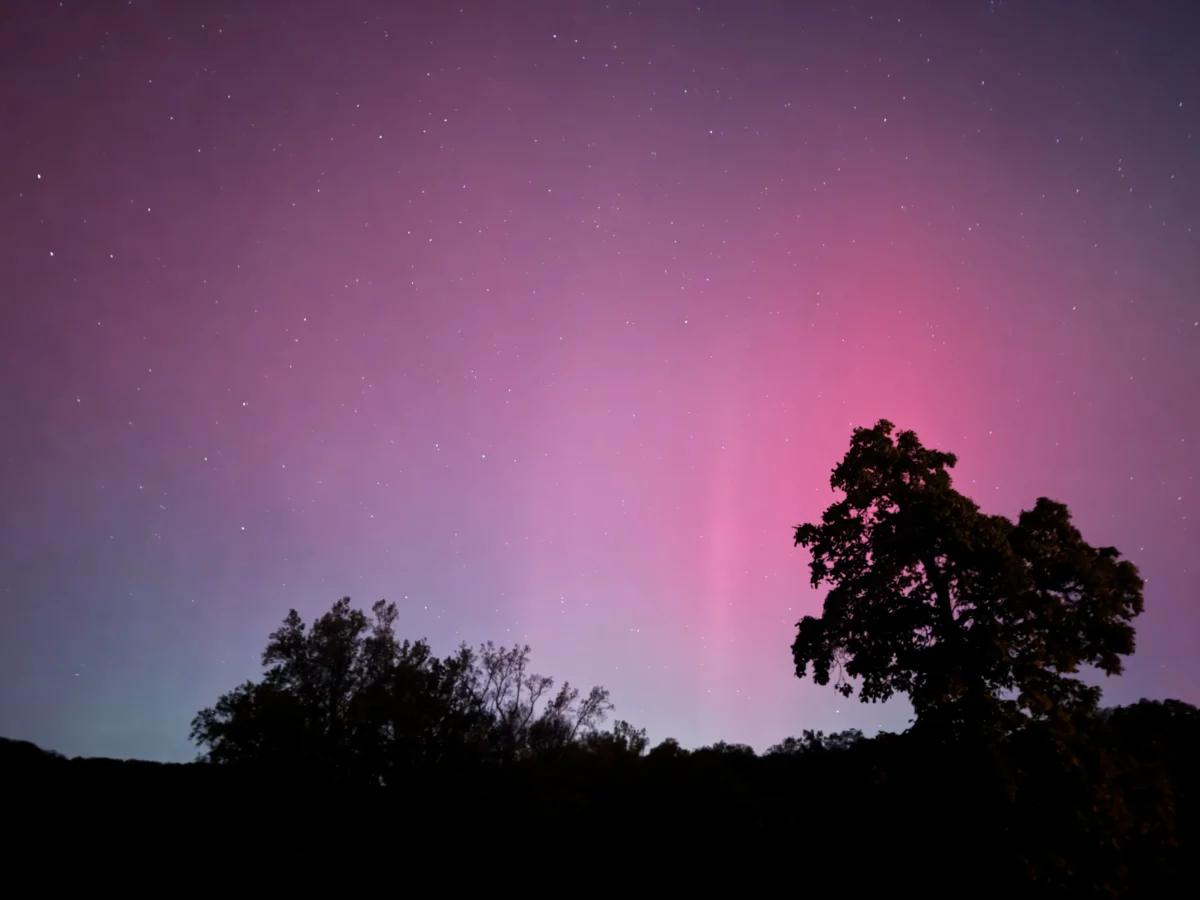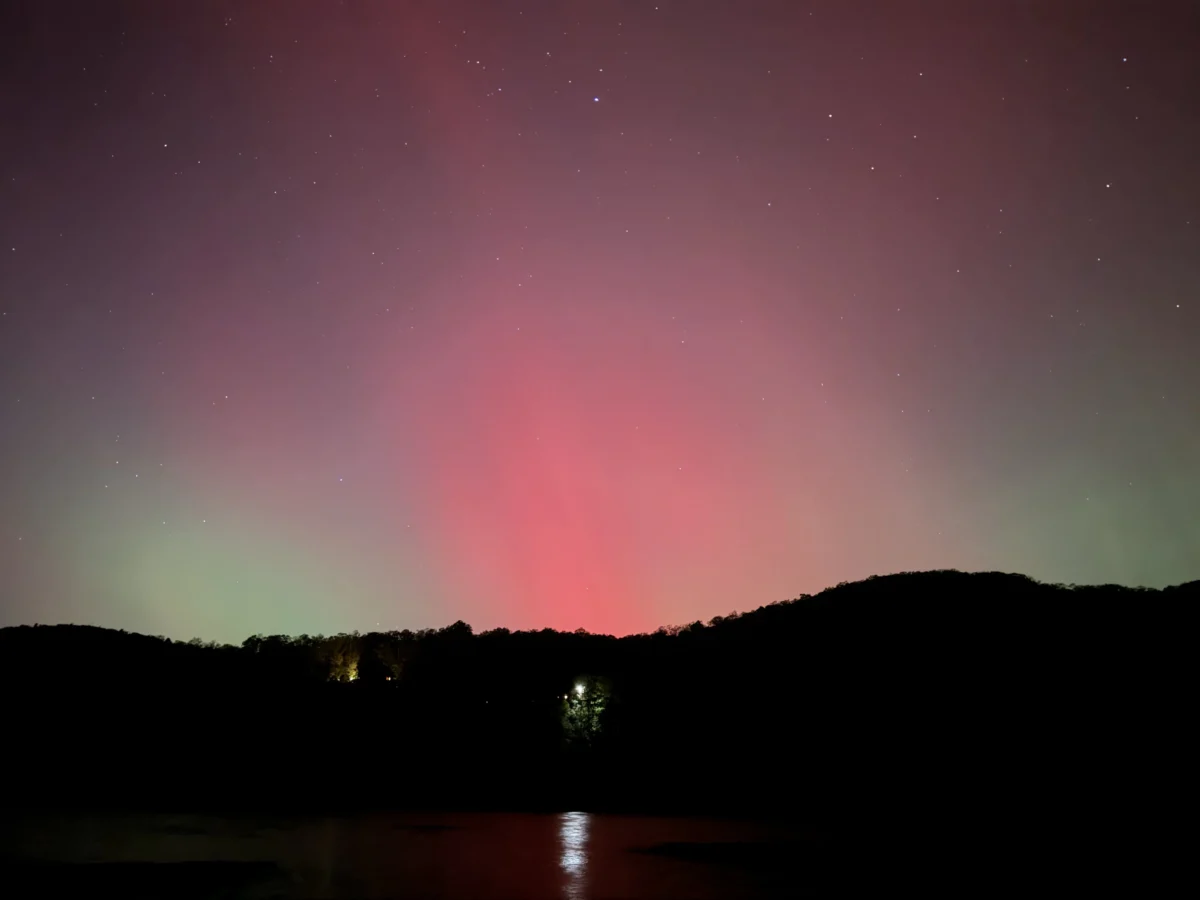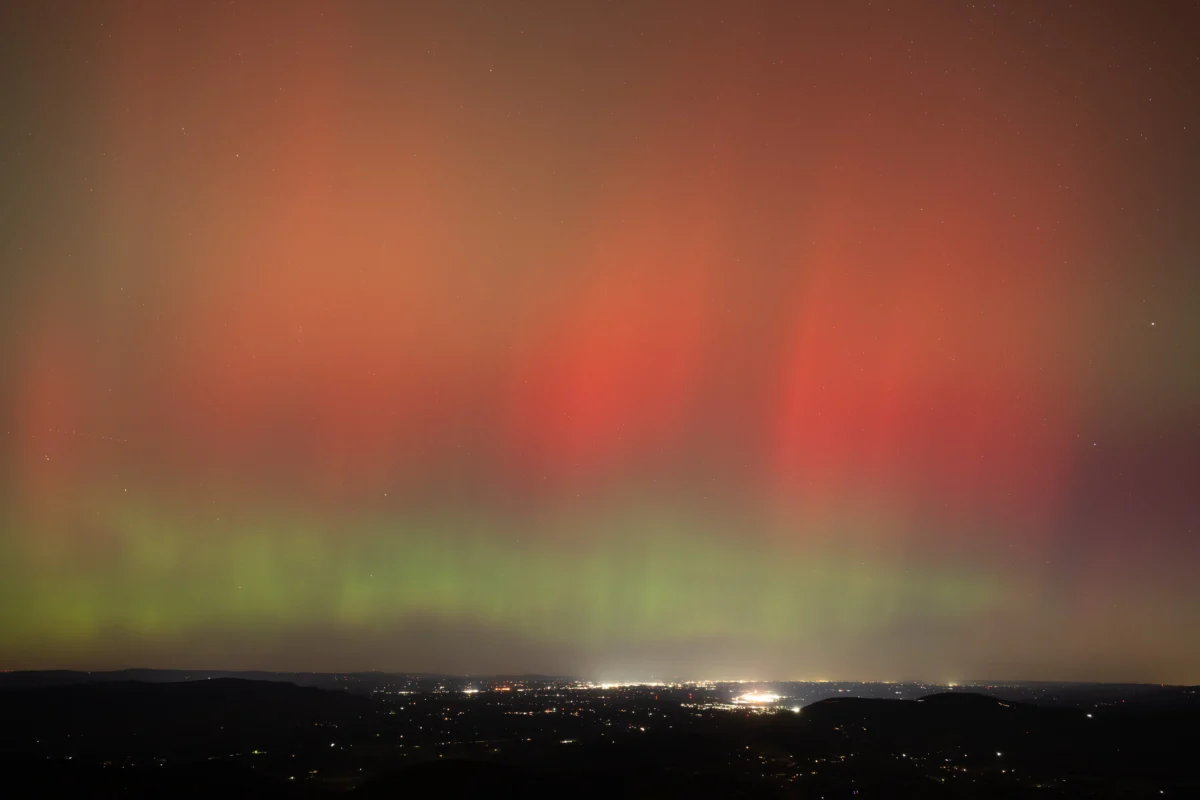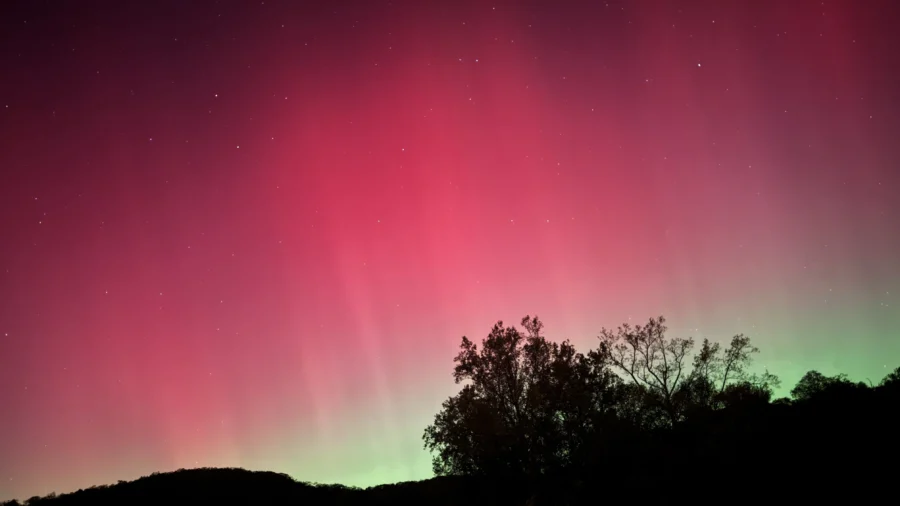Several states in the northern U.S. may have another opportunity to witness the northern lights on Friday night, as per a forecast from the National Oceanic and Atmospheric Administration.
NOAA has predicted a KP index of five for Friday night, indicating that the northern lights will become brighter and could be more active. The agency noted that this would make the aurora borealis “quite pleasing to look at” for those located north of the viewing line.
The viewing line is expected to extend as far south as the northern edge of Iowa, but NOAA recommends being as far north of this line as possible to improve the chances of seeing the lights.
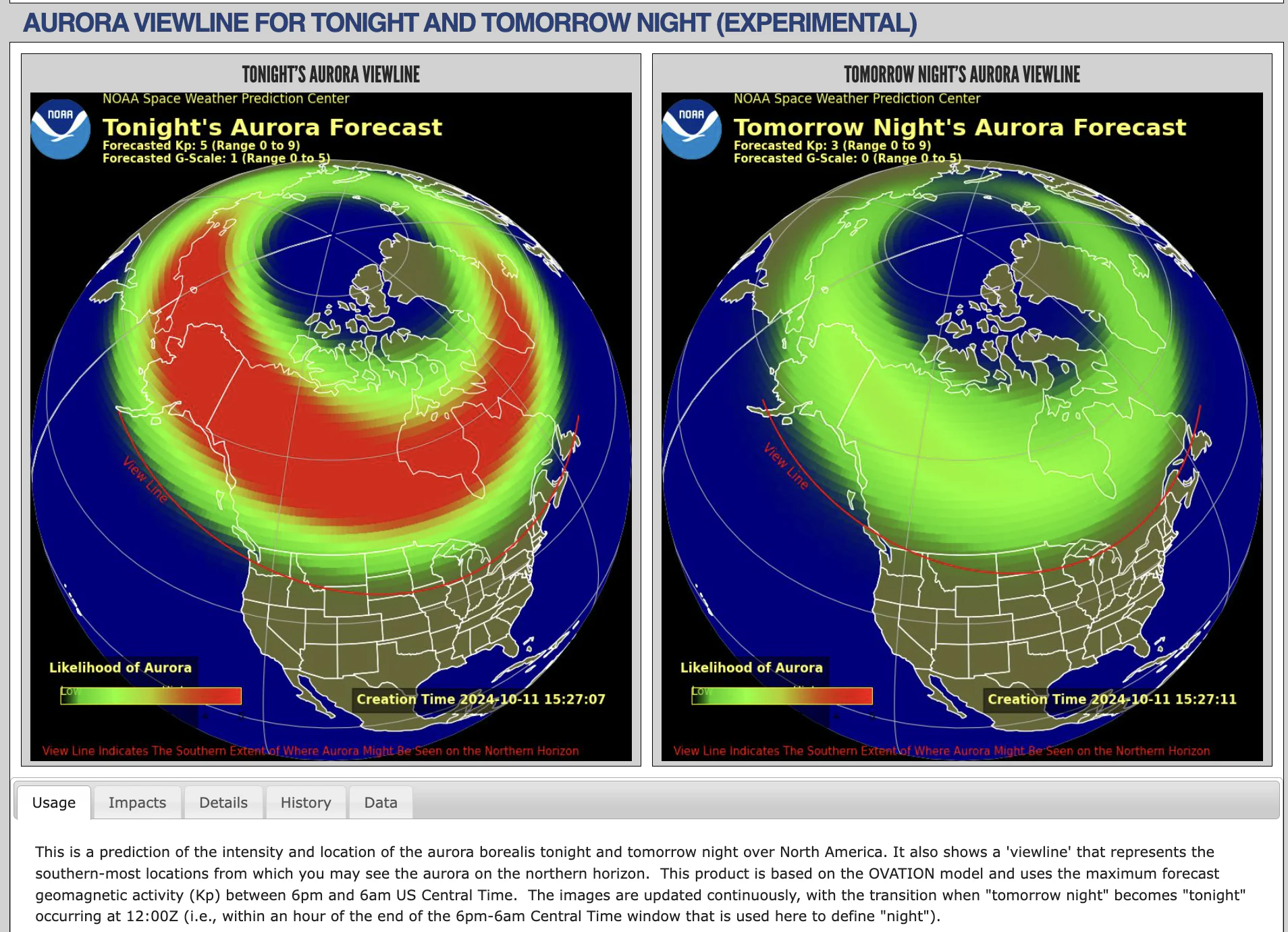
Earlier this week, NOAA issued a severe geomagnetic storm watch, warning that the event could affect critical infrastructure such as power grids, GPS, and radio communications, and may cause the aurora borealis to be visible as far south as Alabama on Thursday.
Where Can You See the Northern Lights?
A portion of the northern U.S. is predicted to have a better chance of seeing the aurora borealis, with Alaska and northern parts of Washington, Idaho, Montana, North Dakota, Minnesota, and Wisconsin being prime locations. Other states, such as Montana, South Dakota, Iowa, Wisconsin, Michigan, New York, New Hampshire, Vermont, and Maine, have a lower probability of witnessing the northern lights.
What’s the Best Way to View?
NOAA suggests viewing from a high point, such as a hill, between 10 p.m. and 2 a.m. in areas with minimal light pollution.
Smartphones can capture the aurora, even if it’s not visible to the naked eye. Iceland’s tourism site recommends using night mode to enhance camera exposure.
When Is It Expected to Peak?
Solar Cycle 25, which started in 2019, has increased the likelihood of seeing the aurora borealis due to rising sunspot activity and geomagnetic storms. The cycle is expected to peak between late 2024 and early 2026, leading to more frequent displays of northern lights. Scientists anticipate more geomagnetic storms through 2026 due to heightened solar activity.
